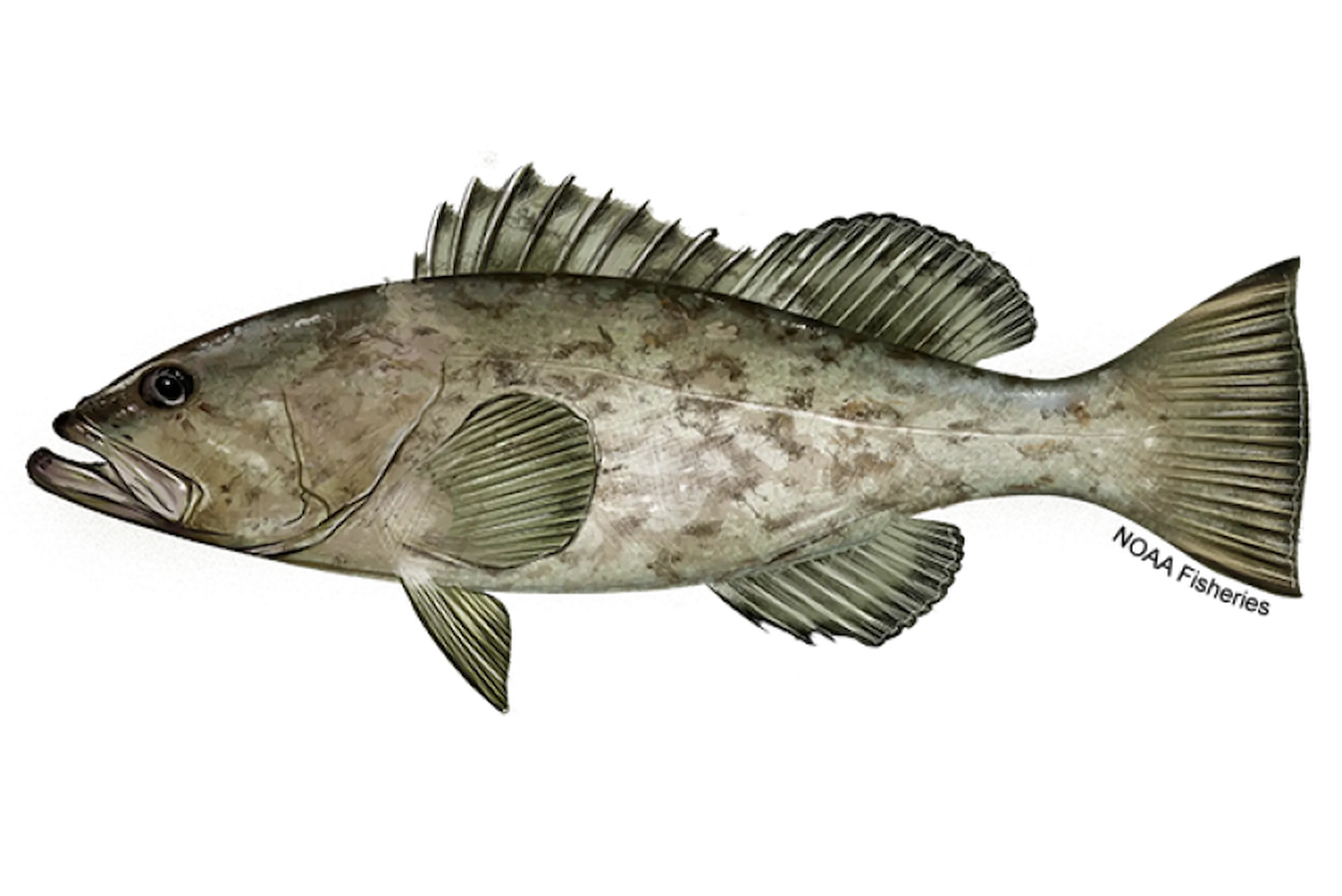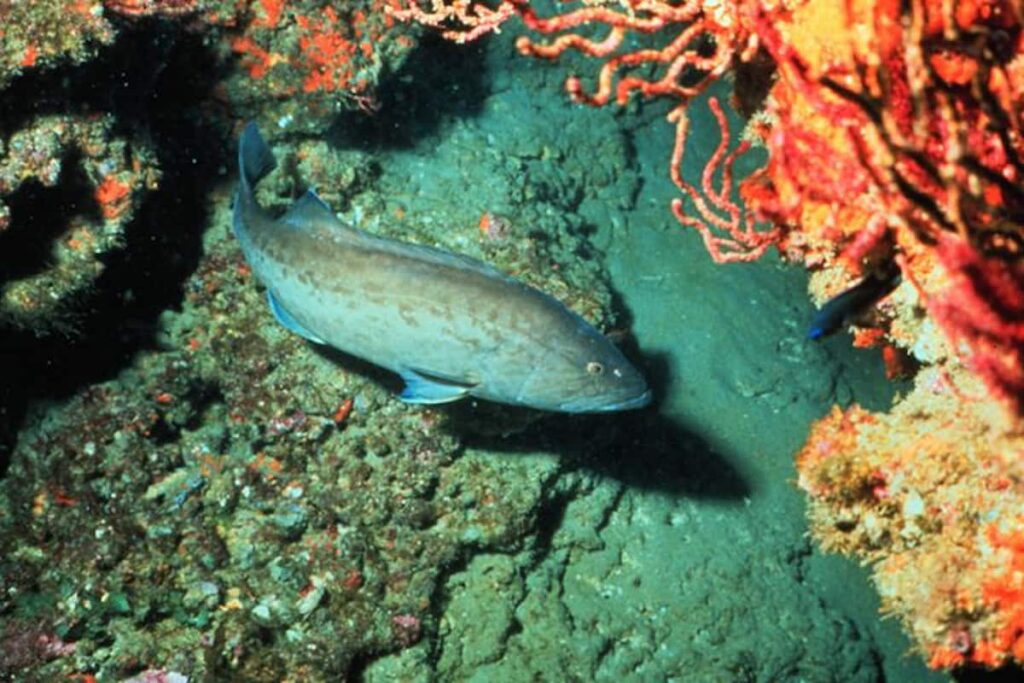All About Gag Grouper
Learn about what makes gag grouper special, vulnerable and why they need our help

Gag grouper are reef fish that live in the waters off the Southeastern United States, with a range that extends south throughout the Caribbean and along the coast of Brazil. They primarily eat fish, crabs and shrimp and can live for more than 30 years. They can weigh up to 80 pounds. Gag grouper are usually grayish brown and black, and some are called “copper bellies” due to darker patterns on their undersides. Gag grouper are known for distinct kiss-shaped markings on their sides in an adorable camouflage pattern.
Gag grouper are fascinating because they are hermaphrodites; they are all born female and some will change to male (protogynous). Sex reversal is very common in fish, but the dynamics that trigger the reversal are highly variable, and for gag, nobody yet knows what triggers the change! What we do know is that from birth as female, it takes nearly a decade before a gag grouper might transition to male. Many never transition though, making them even more mysterious.
Get Ocean Updates in Your Inbox
Sign up with your email and never miss an update.
Research has shown that gag grouper are also extremely dependent on specific habitats during different phases of their lives. In the Gulf of Mexico, juvenile gag (all female) live in seagrass flats and estuaries that serve as nurseries. As they age and grow, they migrate to deeper waters in nearshore reefs. In these nearshore reefs, females begin to mature and join spawning aggregations, to release eggs on offshore reefs. Some transition to male, and the males generally become residents and remain on offshore reefs. However, females visit these deeper offshore reefs to spawn, and then they may (or may not!) return to nearshore reefs. This specialized range makes them more vulnerable to environmental impacts and overfishing during some periods of their lives. For instance, harmful algal blooms have historically decimated juvenile populations in inshore waters.
Gag grouper are such interesting fish, but we have so much left to learn. But gag grouper are also in trouble—they are overfished (meaning the population is too low) and undergoing overfishing (meaning the catch rate is too high). In fact, the gag grouper has been identified as one of the most highly vulnerable fish stocks in the Gulf of Mexico.

Three things make them highly vulnerable:
- Gag grouper are incredibly popular fish for both recreational and commercial anglers. They also form spawning aggregations which make locating large groups easier for anglers.
- Because gag grouper are hermaphrodites, fishery managers must maintain a healthy balance of both males and females which is critical to the population’s survival.
- Management is also challenging because gag grouper have specific ecosystem needs during various periods of their lives. Inshore fishing pressure on gag grouper can result in fewer gag grouper that make it to offshore reefs or transition to males.
We have much to learn from these impressive creatures, but what we do know is that gag grouper are remarkable fish that deserve more research, attention and protection. Ocean Conservancy is hard at work tracking gag landings, management actions and progress to rebuild the stock. We are working with you to protect the ocean from today’s greatest global challenges. We rely on evidence-based solutions for a healthy ocean and the wildlife and communities that depend on it.
Please donate to Ocean Conservancy today and make a difference for the future of our ocean.